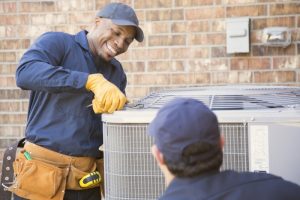A well-functioning plumbing system is indispensable for the smooth operation of any residential or commercial property. One often overlooked but vital aspect of maintaining a reliable plumbing system is preventing backflow, which can jeopardize the quality of your water supply. As a dedicated plumbing service provider, we understand the significance of backflow prevention and aim to educate property owners about the importance of keeping their plumbing systems safe and sound.
In this comprehensive guide, we will delve into the concept of backflow, its causes, why it should concern you, and how backflow prevention devices can protect your plumbing system and the quality of your water supply. By familiarizing yourself with the various backflow prevention devices and industry best practices, you will gain a better understanding of how to keep your property safe from contamination and other potential hazards.
Successful backflow prevention not only ensures the ongoing functionality of your plumbing system but also plays a vital role in maintaining the well-being of all those who rely on your property’s water supply. As both property owners and plumbing professionals, we share a joint responsibility to protect our communities and uphold high standards for water quality in our homes and businesses. So join us as we explore the world of backflow prevention and provide you with the practical tools and knowledge you need to make informed decisions about your property’s plumbing safety.
Understanding Backflow
To comprehend the importance of backflow prevention, it’s essential to understand what backflow is. In simple terms, backflow is the undesired reversal of water flow in a plumbing system. The reversal can cause contaminants, such as sewage, chemicals, fertilizers, and other hazardous substances, to enter the potable water supply. Backflow typically occurs due to two primary reasons:
1. Backpressure
Backpressure is created when the pressure in a non-potable system exceeds the pressure in the potable water supply. It can be caused by factors such as elevated piping, heating systems, and high demand from industrial equipment or processes.
2. Backsiphonage
Backsiphonage occurs when negative pressure in the potable water system causes an unwanted suction of contaminated water. This can arise from circumstances such as a water main break, fire hydrant usage, or plumbing system repairs.
Consequences of Neglected Backflow Prevention
Backflow can have serious consequences for property owners, occupants, and the community. Some of these consequences include:
1. Contaminated Water Supply
The most direct impact of backflow is the contamination of the potable water supply, which can lead to health risks for those who consume it.
2. Legal Repercussions
Governments and health authorities enforce strict regulations to protect water quality, and failure to implement suitable backflow prevention measures can result in fines, penalties, and property closure.
3. Loss of Public Trust
For businesses, a backflow event can lead to negative publicity, damage reputation, and significantly impact consumer confidence.
Common Backflow Prevention Devices
Various backflow prevention devices are available to protect your property’s plumbing system and water supply. Some of the most common devices include:
1. Air Gap
An air gap is a simple yet effective backflow prevention method that entails maintaining a physical separation between potable water and potential contaminants. Air gaps must be carefully sized and installed to comply with regulations and ensure their effectiveness.
2. Atmospheric Vacuum Breaker
An atmospheric vacuum breaker (AVB) is a mechanical backflow preventer installed on individual outlets, such as faucets and hose connections, and works by preventing backsiphonage through an accessible vent that closes when water pressure is applied.
3. Pressure Vacuum Breaker
A pressure vacuum breaker (PVB) is another device designed to prevent backsiphonage, typically installed on the main water supply line. PVBs include a spring-loaded check valve and an air vent, which together ensure adequate airflow and protect against the ingress of contaminants.
4. Reduced Pressure Zone Device
The reduced pressure zone (RPZ) device is a sophisticated backflow preventer that guards against both backpressure and backsiphonage. Featuring two independently operating spring-loaded check valves and a pressure relief valve, an RPZ device offers robust protection—even in the presence of debris and varying water pressure.
Backflow Testing and Maintenance
Proper backflow prevention requires regular testing and maintenance to ensure the ongoing effectiveness of your chosen devices. Here are some key considerations for maintaining backflow preventers:
1. Annual Inspection
Backflow prevention devices should be inspected and tested annually by a licensed professional. Annual inspections can help identify potential weaknesses or failures before problems escalate.
2. Compliance with Regulations
Ensure that your property’s backflow prevention measures meet local regulations and guidelines, as these standards are designed to protect public health and safety.
3. Replace Damaged or Outdated Equipment
If a backflow preventer becomes irreparably damaged or is approaching the end of its useful life, it’s crucial to replace it promptly to uphold the integrity of your plumbing system and water supply.
Protecting Your Property with Backflow Prevention
No property owner can afford to overlook the importance of backflow prevention in safeguarding their plumbing system and water supply. By understanding the causes, consequences, and appropriate preventive measures, you can ensure that your property remains safe from the threats posed by backflow events. Regular testing, maintenance, and professional assistance are key components of an effective backflow prevention strategy.
The Irish Plumber’s team of experienced plumbers is well-equipped to handle all your backflow prevention needs, from device installation and testing to ongoing maintenance and expert advice. Don’t wait for a backflow emergency to occur — protect your property and its occupants by taking a proactive approach to backflow prevention today.






.png?width=650&height=433&name=kitchen_faucet%20(1).png)

